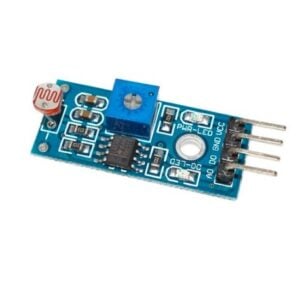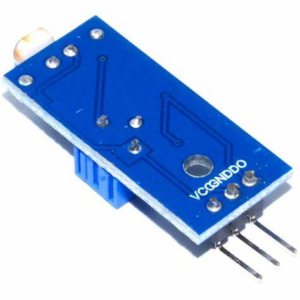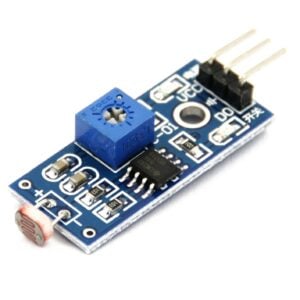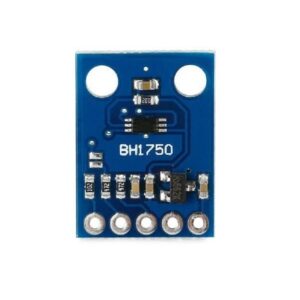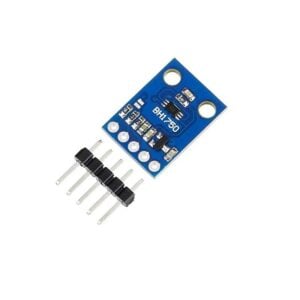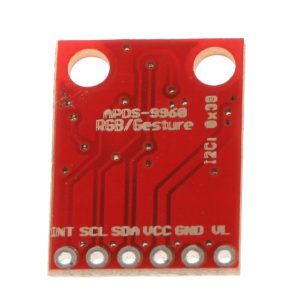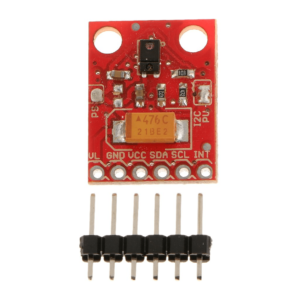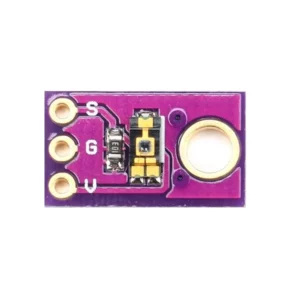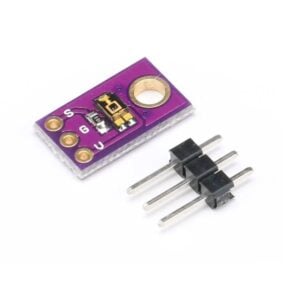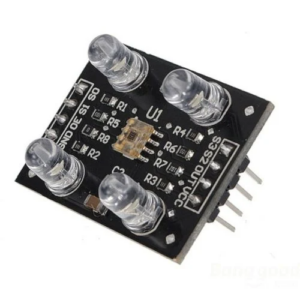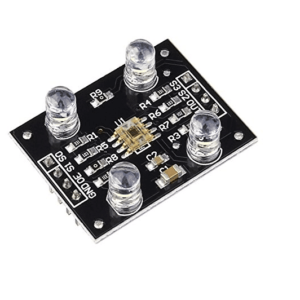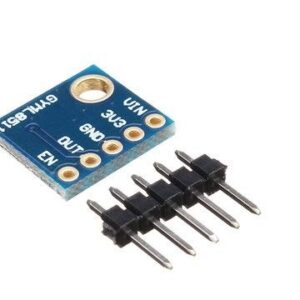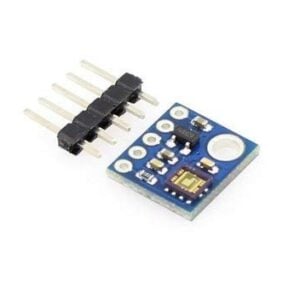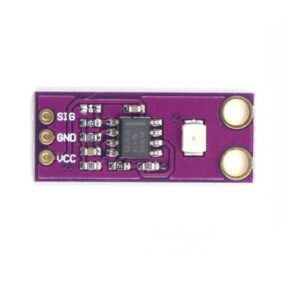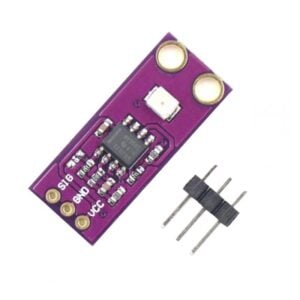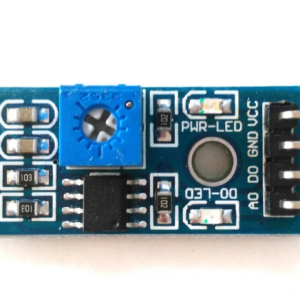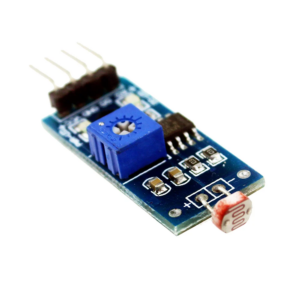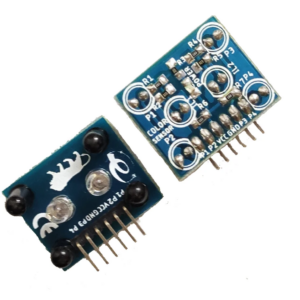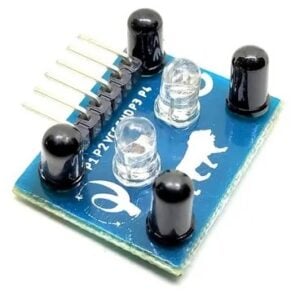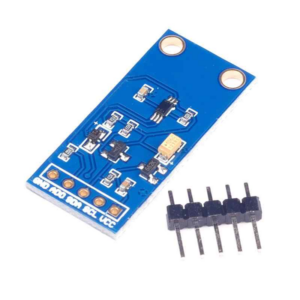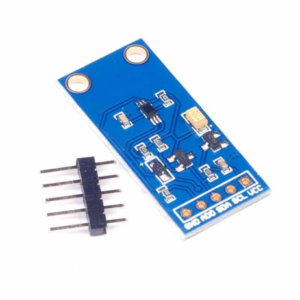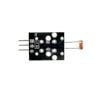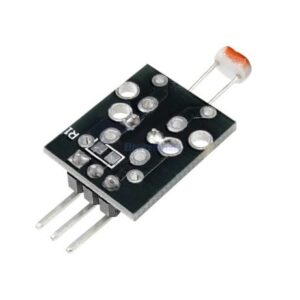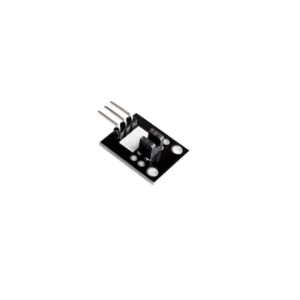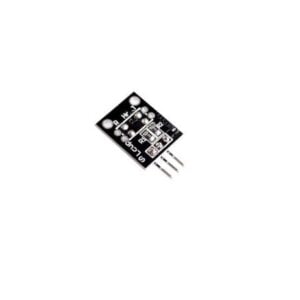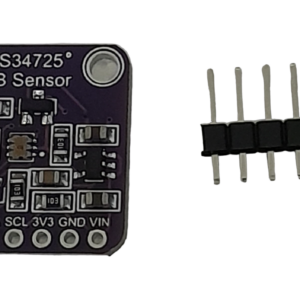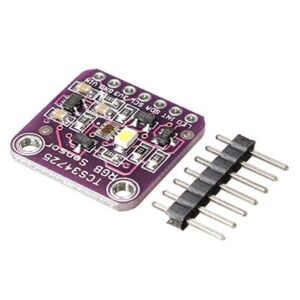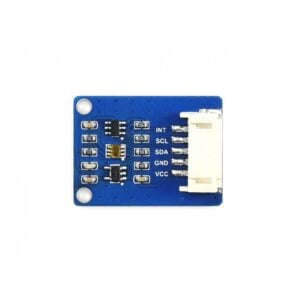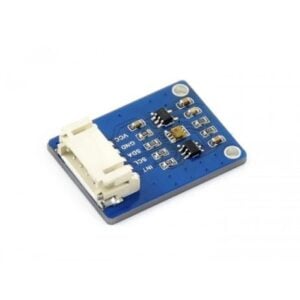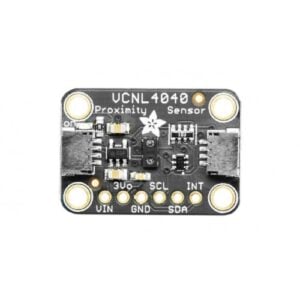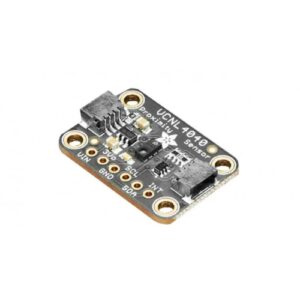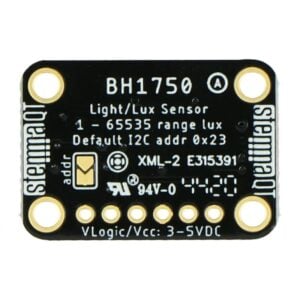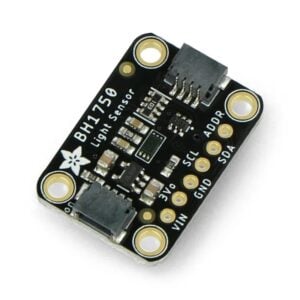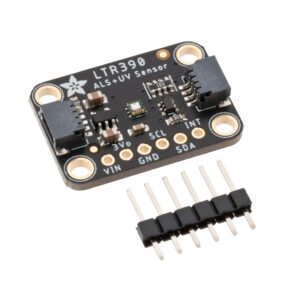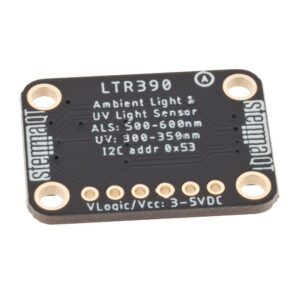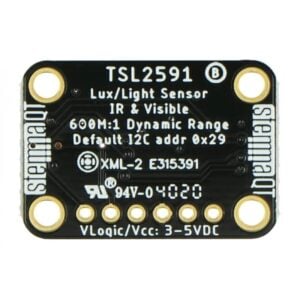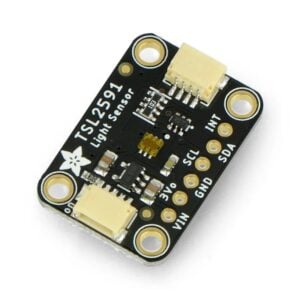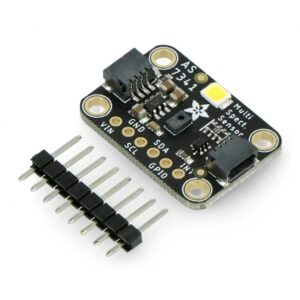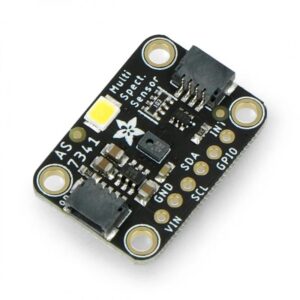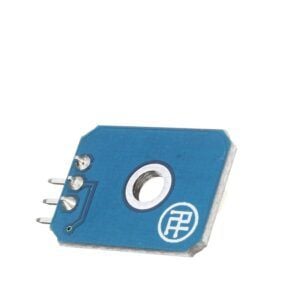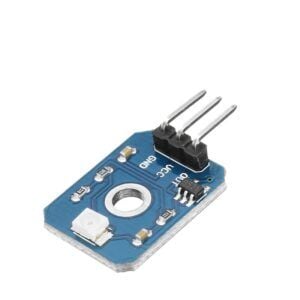1800 209 0998
support@zbotic.in
Help Desk
0
0
Shopping cart (0)
Subtotal: ₹0.00
Spend to get free shipping
Congratulations! You've got free shipping.
0
0
Shopping cart (0)
Subtotal: ₹0.00
Spend to get free shipping
Congratulations! You've got free shipping.
A color sensor, also known as a photoelectric sensor, emits light from a transmitter and then detects the light reflected back from the object using a receiver. These sensors can detect the intensity of light reflected from an object and differentiate between primary colors such as red, blue, and green. By analyzing the received light intensity for these colors, it becomes possible to determine the color of the target object. Color sensors are widely used in various applications, including medical diagnosis, color printing, computer monitor calibration, cosmetics, paint, textiles, and process control for printing materials.
Digital LDR Module – 4Pin
SKU: AI0103Rated 5.00 out of 5
₹30.00 (₹25.42 + GST)
QUICK OVERVIEW
Add to Compare
- LDR module 4 PIN
- Operating voltage 3.3V-5V
- Signal output indicator light.
Digital LDR Module – 3 Pin
SKU: AI0830Rated 5.00 out of 5
₹26.20 (₹22.20 + GST)
LM393 based design.
Can detect ambient brightness and light intensity.
Adjustable sensitivity (via blue digital potentiometer adjustment).
Output Digital – 0V to 5V, Adjustable trigger level from preset.
LEDs indicating output and power.
Operating Voltage: 3.3V to 5V DC.
Operating Current: 15ma.
Add to Compare
GY-302 BH1750 Light Intensity Module
SKU: AI0853Rated 0 out of 5
₹77.88 (₹66.00 + GST)
QUICKOVERVIEW
Add to Compare
- High precision determination accurate to 1 Lu for different lights
- Operating Voltage: 3-5VDC
- Built-in 16bit A/D converter
- I2C interface
APDS9960 RGB Gesture Sensor Detection I2C Breakout Module for Arduino
SKU: AI0307Rated 0 out of 5
₹197.00 (₹166.95 + GST)
QUICK OVERVIEW
Add to Compare
- Operational Voltage: 3.3V.
- Ambient Light & RGB Color Sensing.
- Proximity Sensing.
- Gesture Detection.
- Operating Range: 4-8in (10-20cm).
- I2C Interface (I2C Address: 0x39).
CJMCU-TEMT6000 An Ambient Light Sensor
SKU: AI1442Rated 0 out of 5
₹92.04 (₹78.00 + GST)
QUICK OVERVIEW
Read more
Add to Compare
- AEC-Q101 qualified
- High photosensitivity
- Near-Human Eye Spectral Response
- Scalable Output Voltage
- Adapted to human eye responsivity
- Lead (Pb)-free reflow soldering
- Compliant to RoHS Directive 2002/95/EC and in accordance to WEEE 2002/96/EC
TCS3200 Colour Recognition Sensor Module
SKU: AI0142Rated 0 out of 5
₹392.94 (₹333.00 + GST)
QUICK OVERVIEW
- Operating Voltage: 3V-5V
- High-resolution conversion of light intensity to frequency.
- Chip pins all has drawn for standard 100.
- Put the needle (2.54 mm).
- Mil-convenient for bitmap board.
- Programmable color and full-scale output frequency.
- Communicate directly with a microcontroller.
- Low-profile surface mount package.
GYML8511 Analog Output Ultra-Violet Light Sensor Module
SKU: AI0333Rated 0 out of 5
₹321.00 (₹272.03 + GST)
- Operating voltage (VCC): 3 V to 5V
- Operating current: 120μA (typical) 190μA (max)
- Operating Temperature: -40°C ~ +85°C
- Photodiode sensitive to UV-A and UV-B
- Embedded operational amplifier
- Analog voltage output
- Low supply current (300uA type) and low standby current (0.1uA type)
CJMCU-GUVA-S12SD Sunlight Ultraviolet Ray Intensity UV Sensor
SKU: AI0831Rated 0 out of 5
₹239.54 (₹203.00 + GST)
QUICKOVERVIEW
Add to Compare
- Power supply voltage of 2.5 V ~ 5 V
- Low power consumption
- Wide detection range: 240 nm to 370 nm
- Wide Angle: 130 degrees
- Schottky type photosensitive diode
- Good linear response
- High sensitivity
LM393 Photosensitive Light-Dependent Control Sensor LDR Module
SKU: AI5203Rated 0 out of 5
₹29.45 (₹24.96 + GST)
- LDR module 4 PIN
- Operating voltage 3.3V-5V
- Signal output indicator light.
- LDR module 4 PIN
- Able to detect ambient brightness and light intensity Adjustable sensitivity (via blue digital potentiometer adjustment)
Embeddinator Blue Color Sensor Module
SKU: AI1804Rated 0 out of 5
₹164.00 (₹138.98 + GST)
Type: Color sensor
Part Number: Color sensor
Brand: Embeddinator
Sensor Type: Analog
Usage/Application: Object Detection
Add to Compare
GY-30 BH1750FVI Digital Light Intensity Illumination Sensor
SKU: AI2472Rated 0 out of 5
₹133.00 (₹112.71 + GST)
QUICK OVERVIEW:
- High precision determination accurate to 1 Lux for different lights
- Operating Voltage: 3-5VDC
- Built-in 16bit A/D converter
- I2C interface
Photosensitive Resistor Sensor Module for Arduino
SKU: AI2506Rated 0 out of 5
₹23.00 (₹19.49 + GST)
QUICK OVERVIEW:
- This is a High-quality photosensitive sensor module/light module detects the photosensitive resistor for Arduino
- Resistance of the photoresistor is typically less than 80 Ohms (in full light)
- Dark resistance is typically greater than 20 Meg Ohms (in full darkness)
Broken Light Module
SKU: AI2503Rated 0 out of 5
₹33.00 (₹27.97 + GST)
Voltage 5V
Photo interruption module triggers a signal when light is blocked between the opening of the sensor.
CJMCU-34725 TCS34725 Color Sensor RGB Module
SKU: AI3464Rated 0 out of 5
₹187.62 (₹159.00 + GST)
- Operating Voltage: 3.3V
- Supply Voltage: 3.3V-5V
- The TCS3472 device provides digital return values for red, green, blue (RGB) and bright light sensing
- Color management is more accurate.
- The high sensitivity.
- Wide dynamic range.
- IR shading filters make the TCS3472 ideal.
Waveshare TSL25911 High Sensitivity Digital Ambient Light Sensor I2C Interface
SKU: AI2056Rated 0 out of 5
₹305.62 (₹259.00 + GST)
This is a high sensitivity digital ambient light sensor module based on TSL25911, features 600M:1 wide dynamic range, detects light intensity up to 88000Lux, controlled via I2C interface, low power consumption. It is capable of operating across various light environment. Digital light intensity sensor from Waveshare. The module is based on TSL25911 chip, which enables
Add to Compare
Adafruit VCNL4040 Proximity and Lux Sensor – STEMMA QT/Qwiic
SKU: AI1756Rated 0 out of 5
₹742.22 (₹629.00 + GST)
Overview
Read more
Add to Compare
- Proximity sensor works from 0mm to 200mm
- The light sensor has a range of 0.0125lux to 6553lux
- 80ms integration time is 6553.5lux
- 640ms integration time is 819.2lux
- I2C interface
- SparkFun qwiic compatible STEMMA QT connectors
Adafruit BH1750 Light Sensor – STEMMA QT/Qwiic
SKU: AI1752Rated 0 out of 5
₹529.82 (₹449.00 + GST)
Overview
Read more
Add to Compare
- Supply voltage: from 3 V to 5 V
- Measuring range: from 1 lux to 65535 lux
- Communication interface: I2C
- STEMMA QT / Qwiic connector
Adafruit LTR390 UV Light Sensor – STEMMA QT/Qwiic
SKU: AI1750Rated 0 out of 5
₹647.82 (₹549.00 + GST)
Overview
Read more
Add to Compare
- Circuit: LTR390
- ALS measurement: 500 nm to 600 nm
- UVA measurement: 300 nm to 350 nm
- Supply voltage: 3 V to 5 V DC
- Communication interface: I2C
- Interface address: 0x53
Adafruit TSL2591 High Dynamic Range Digital Light Sensor – STEMMA QT
SKU: AI1748Rated 0 out of 5
₹942.82 (₹799.00 + GST)
Overview
Read more
Add to Compare
- Approximates Human eye Response
- Extremely wide dynamic range 1 to 600,000,000 Counts
- Lux Range: 188u Lux sensitivity, up to 88,000 Lux input measurements
- Voltage range: 3.3-5V into the onboard regulator
- This board/chip uses I2C 7-bit addresses 0x29 and 0x28 (yes BOTH!)
Adafruit AS7341 10-Channel Light / Color Sensor Breakout – STEMMA QT/Qwiic
SKU: AI1747Rated 0 out of 5
₹2,358.82 (₹1,999.00 + GST)
Overview
Read more
Add to Compare
- Super MUX (SMUX)
- 3mm x 2mm footprint
- 16-bit ADC with digital access
- 11 readable individual sensor elements
- 10 visible channels: 415, 445, 480, 515, 555, 590, 630, 680
DC3.3V-5V UV Detection Sensor Module Ultraviolet Ray Module For Arduino Sensor
SKU: AI1068Rated 0 out of 5
₹477.90 (₹405.00 + GST)
QUICK OVERVIEW
Read more
Add to Compare
- Operating voltage: DC 3.3-5V
- Output voltage: DC 0-1V
- Test accuracy: ±1UV INDEX
- Current: 0.06mA (typ), 0.1mA (max)
- Response wavelength: 200nm-370nm
Product categories
- Show All Categories
- 3D Printers and Parts (140)
- Batteries & Chargers and Accessories (560)
- Clearance Sale (0)
- Development Boards (306)
- DIY Learning and Robot Kits (44)
- Drone Parts (595)
- EBike parts (141)
- Electronic Components (657)
- Electronic Modules and Displays (972)
- IoT and Wireless (366)
- Mechanical Parts and Workbench Tools (192)
- Motors & Drivers & Pumps & Actuators (522)
- Refurbished & Partial Working (0)
- Sensors Modules (542)
- Services (0)
- Uncategorized (90)
- Sensors Modules (542)
- Biometric/ECG/EMG Sensor (18)
- Current and Voltage Sensor (28)
- Distance Sensor (7)
- Environmental Sensors (14)
- Flame Sensor (1)
- Gas and Dust Sensor (41)
- Hall Sensor (8)
- IMU, Accelerometer, Magnetometer & Gyroscope (19)
- LiDAR Sensor (4)
- Light/color Sensor (21)
- Line Sensor (5)
- Load / Pressure / Force / Flex Sensor (22)
- Other Sensors (7)
- PIR / IR and Optical Sensor (43)
- Proximity Sensor (14)
- RFID card (2)
- RFID card, Tags & Reader (15)
- Rotary Encoder (13)
- Sensor Kits (1)
- Sound Sensor (11)
- Temperature & Humidity Sensor (84)
- Thermoelectric Peltier Elements (47)
- Ultrasonic Sensors and Modules (24)
- Vibration/Tilt Sensor and Modules (20)
- Water TDS, pH, Flow, Level and Pressure Sensor (75)

